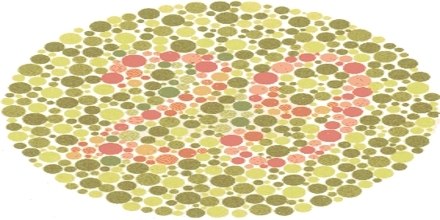The normal human retina contains two kinds of light sensitive cells: the rod cells (active only in low light) and the cone cells (active in normal daylight and responsible for color perception). Normally, there are three kinds of cones (each one sensitive to a specific range of wavelengths): “red” cones (64%); “green” cones (32%) and “blue” cones (2%) . The different kinds of inherited color blindness result from partial or complete loss of function of one or more of the different cone systems.
Lecture on Color Blindness
















